Article by Ahana Ayyapparaj and design by Mythili A. P. for En Avant Summer 2025
Feature image: Alvin Ailey American Dance Theater in Alvin Ailey’s “Revel-ations.” (Photo: Gert Krautbauer)
When most people think of ballet, they may not immediately consider the intense muscular effort behind each movement. Yet behind every lift, leap, and position en pointe lies a network of highly conditioned muscles working in harmony. Ballet dancers rely heavily on the core muscles including the rectus abdominis, obliques, and transverse abdominis for balance and control. The gluteal muscles, quadriceps, hamstrings, and calves power their jumps and extensions, while the hip flexors and adductors enable turnout and leg lifts. Even the intrinsic foot muscles and ankle stabilizers are critical for maintaining precision en pointe. This article explores how ballet demands the development of these muscles through rigorous training, revealing the athleticism and physical strength required to perform this art form.
The Myth of the “Frail” Ballerina
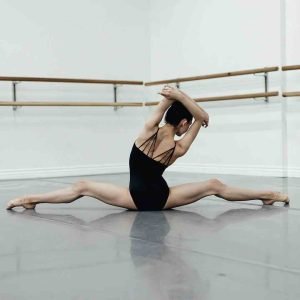
The back muscles like shoulder blades and ribcage muscles are used to hold our arms and upper body for ballet. Photo Credit: Só Dança US.
For generations, the public has viewed ballerinas in relation to their outer appearance: long legs, thin body, and small facial features. The visual beauty of ballet has long emphasized these features, which are deceptive as they might be interpreted as weakness or vulnerability. What is often lost, however, is the reality that a dancer must have a highly trained and powerful body. Ballerinas undergo years of intense training, much as Olympic athletes. Their movements, although appearing effortless on stage, require explosive power, stamina, flexibility, and precise muscular control. The false impression of the frailty of ballerinas is partly due one of the essences of ballet: to render the difficult easy. In contrast to sporting events for which overbearing power and forceful movement are the hallmarks of admiration, ballet conceals its power under smooth and elegant movement. Consequently, the public do not sense the great athleticism required.
The Function of Functional Training in Ballet
Functional training is an integral part the daily routine of most ballet dancers. It is based on movements that simulate the biomechanics of ballet, creating strength, and reducing the risk of injury. Pilates, resistance band training, and cross-training on a bicycle or swimming are utilized to supplement ballet classes. It strengthens the body as a unit, creates joint stability, and enables muscular balance. Ballet dancers need to acquire not only raw strength but sensitive strength in which small adjustments in movement when in motion can be made. For example, supporting an arabesque requires standing leg strength, control of the raised leg, and perfect alignment through spine and shoulders—a collective effort all working together in harmony.
Endurance and Cardiovascular Conditioning
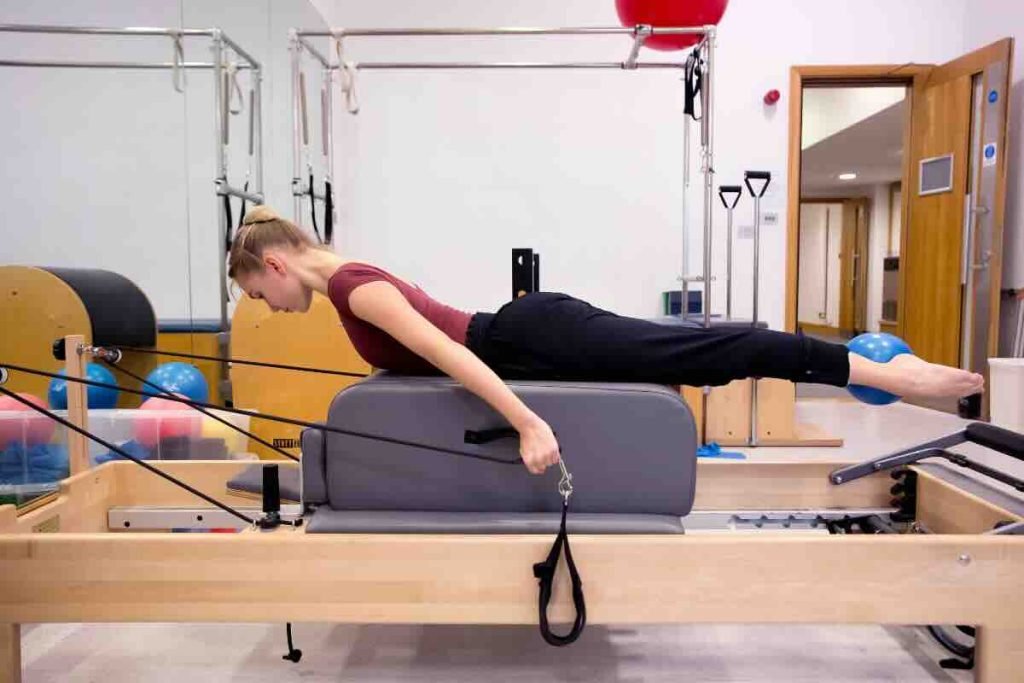
This is a student from Royal Ballet School under the guidance of physiotherapist Erica Gethen Smith. Photo Credits: Royal Ballet School.
Cardiovascular conditioning is another area where ballet overlaps with mass sports. A single performance can be as physically demanding as a football game or a gymnastics routine. Dancers must be capable of performing 2–3 hour performances without compromising on technique or stamina. Therefore, cardio training, running, and even high-intensity interval training (HIIT) are a part of many dancers’ training.
Ballet vs Sports – what’s the difference?
Gymnastics and Ballet: Both require flexibility, body awareness, explosive strength, and pressure execution. Ballet requires more sustained control and longer performance time, hence endurance is more critical. Let’s compare the use of the quadriceps in ballet dancers and gymnasts.
In Ballet they are used for controlled leg extensions, plies and relevés. Ballet dancers emphasize precision, balance and turnout, requiring sustained muscular control in the quads to maintain elegant lines and slow, deliberate movements.
In Gymnastics they are used for explosive power in tumbling, vaulting and landings. Gymnasts rely on quick, high force contractions of their quads for jumps, flips and sticking landings.
Figure Skating and Ballet: Both these involve a combination of art and athleticism. Similar to figure skaters, ballerinas need to do technically complex movements while expressing feeling and telling a story. Let’s compare how the gluteal muscles are trained by both ballet dancers and figure skaters.
In Ballet they are used for hip stability, turnout and leg extensions. Ballet dancers rely on the glutes to lift and hold the leg high in positions like arabesques while maintain their posture and control.
In Figure Skating they are used for balance, power during jumps, and maintaining hip alignment during spins and glides. Skaters engage their glutes to stabilize their legs and control landings on a narrow blade.
Martial Arts and Ballet: As different as the stars, yet both requiring discipline, precision, controlled breathing, and the utilization of deep muscles to produce power and equilibrium. Take a look at how ballet dancers and martial artists use their hip flexors.
In ballet they are important for lifting the leg in front during développés or grand battements.
In martial arts they are used for high front kicks and knee strikes. Martial artists use these muscles to drive the leg upward quickly and with force, often requiring speed over finesse.
Long-Distance Running and Ballet: Long ballet rehearsals and performances demand stamina, which can be compared to long-distance running. Both must endure physical fatigue with perfect form. Ballet dancers and runners train their calf muscles, but each in their own way.
In ballet the calf muscles are used for rising onto the toes on either demi-pointe or pointe, jumping, and to maintain pointed feet. Ballet dancers engage their calves for balance, lightness, and aesthetic lines in the legs and feet.
In long-distance running these muscles are used for pushing off the ground and maintaining a steady stride. Runners depend on their calves for propulsion and endurance over long distances.
Reorganizing the Ballet Structure
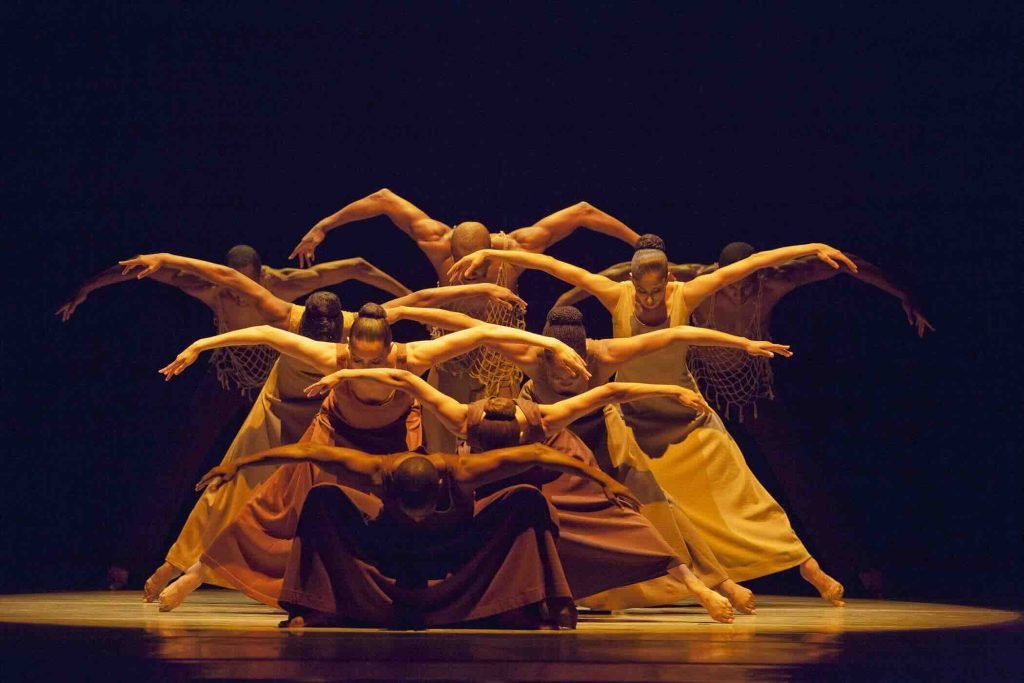
Modern ballet choreographers employ more athletic movements. In frame: Alvin Ailey American Dance Theater in Alvin Ailey’s “Revel-ations.” (Photo: Gert Krautbauer)
In the past decades, the “ballet body” ideal has been criticized and gradually redefined. Although the appearance of long limbs and lean musculature remains the standard, emphasis is gradually being placed on being strong, healthy, and functional as opposed to merely appearing so. The art world is beginning to realize that healthy bodies, regardless of the specific body type, can do ballet.
Modern ballet choreographers also employ more athletic and contemporary movements, again demanding a body capable of executing dynamic floor work, falls, and lifts. This shift departs from the previous stereotypes and highlights the evolving status of ballet as a high-performance art.
We need to acknowledge that ballet is not merely a pursuit of elegance – it is a discipline grounded in immense physical strength, muscular control, and anatomical precision. Every grand jeté, arabesque, or développé is powered by a complex and highly trained network of muscles. The hip abductors, piriformis, and iliopsoas are constantly engaged to achieve the high extensions and perfect turnout that ballet demands. The serratus anterior and trapezius contribute to the fluid, yet controlled, carriage of the upper body, while deep stabilizers like the multifidus ensure balance and spinal support throughout dynamic sequences. Even the flexor hallucis longus, a small but powerful muscle in the foot, is vital for pointe work and precision.
What sets ballet apart is the expectation of strength delivered with grace. Yet the physical training of a ballerina mirrors that of elite gymnasts, figure skaters, and runners requiring stamina, flexibility, joint stability, and muscle endurance at the highest levels. Dancers spend countless hours conditioning muscles that most people never even think about.
Ballet is not only an art form; it is a high-performance sport. And the dancers who dedicate their lives to mastering it deserve full recognition not just as artists, but as world class athletes in their own right.



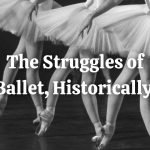

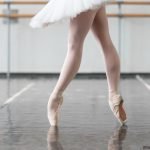
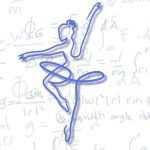

Leave a Reply